Division of Werriwa
The Division of Werriwa is an Australian electoral division in the state of New South Wales. The name Werriwa derives from a local Aboriginal name for Lake George, which was located in the division when it was established in 1900. The division was one of the original 65 divisions first contested at the first federal election.
| Werriwa Australian House of Representatives Division | |
|---|---|
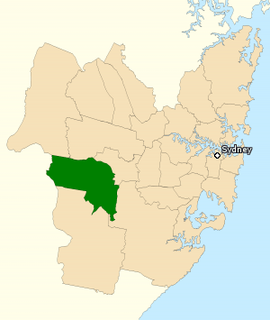 Division of Werriwa in New South Wales, as of the 2016 federal election. | |
| Created | 1901 |
| MP | Anne Stanley |
| Party | Labor |
| Namesake | Lake George (Aboriginal name) |
| Electors | 117,739 (2019) |
| Area | 172 km2 (66.4 sq mi) |
| Demographic | Outer Metropolitan |
Werriwa now covers an area in south-west Sydney, including the suburbs of Ashcroft, Austral, Bonnyrigg Heights, Busby, Carnes Hill, Cartwright, Casula, Cecil Hills, Edmondson Park, Glenfield, Green Valley, Heckenberg, Hinchinbrook, Horningsea Park, Hoxton Park, Long Point, Lurnea, Macquarie Fields, Macquarie Links, Middleton Grange, Miller, Minto, Prestons, Sadleir, and West Hoxton; as well as parts of Badgerys Creek, Bonnyrigg, Bringelly, Cecil Park, Denham Court, Ingleburn, Kemps Creek, Leppington, Mount Pritchard, and Rossmore.
The current Member for Werriwa, since the 2016 federal election, is Anne Stanley, a member of the Australian Labor Party.
History
Originally, Werriwa was a large and mostly rural electorate that stretched from southwest Sydney to the northern part of what is now the ACT, and included the Southern Highlands, Goulburn and part of the South West Slopes. In succeeding years following its establishment, with demographic change and electoral redistributions, Werriwa began to shrink and from 1913 onwards no longer contained Lake George. It underwent several other major changes to its borders over the years. The 1949 expansion of Parliament saw Werriwa lose most of its remaining rural territory to the newly created Division of Macarthur and move to approximately its current position in southwest Sydney, over 150 kilometres (93 mi) away from Lake George. However, it has retained the name of Werriwa, primarily as it is an original Federation electorate—the Australian Electoral Commission's guidelines on electoral redistributions require it to preserve the names of original Federation electorates where possible.[1]
It is a very safe seat for Labor, which has held it continuously since 1934 and for all but nine years since 1906.
Werriwa is best remembered for being the electorate of former Prime Minister Gough Whitlam, who held it from 1952 to 1978. It was represented from 1994 to 2005 by one of Whitlam's former aides, Mark Latham, the leader of the ALP and Leader of the Opposition from 2003 to 2005. It more recent times, a by-election in March 2005 resulted in Labor's Chris Hayes elected with over 55% of the vote, in a 16-candidate race which saw no other candidate poll above 8%.
Members
| Image | Member | Party | Term | Notes | |
|---|---|---|---|---|---|
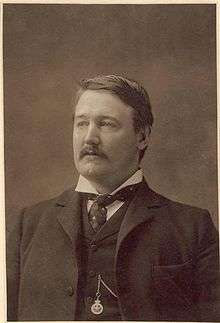 |
Alfred Conroy (1864–1920) |
Free Trade | 29 March 1901 – 1906 |
Lost seat | |
| Anti-Socialist | 1906 – 12 December 1906 | ||||
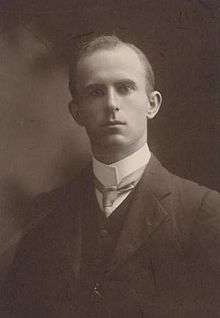 |
David Hall (1874–1945) |
Labour | 12 December 1906 – 1 April 1912 |
Previously held the New South Wales Legislative Assembly seat of Gunnedah. Resigned in order to become a member of the New South Wales Legislative Council | |
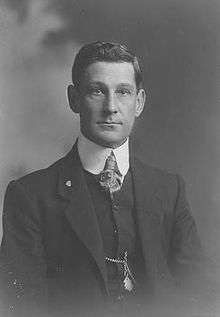 |
Benjamin Bennett (1872–1939) |
Labor | 1 June 1912 – 23 April 1913 |
Retired | |
 |
Alfred Conroy (1864–1920) |
Commonwealth Liberal | 31 May 1913 – 5 September 1914 |
Lost seat | |
.jpg) |
John Lynch (1862–1941) |
Labor | 5 September 1914 – 14 November 1916 |
Lost seat | |
| National Labor | 14 November 1916 – 17 February 1917 | ||||
| Nationalist | 17 February 1917 – 13 December 1919 | ||||
 |
Bert Lazzarini (1884–1952) |
Labor | 13 December 1919 – 27 March 1931 |
Lost seat | |
| Labor (NSW) | 27 March 1931 – 19 December 1931 | ||||
 |
Walter McNicoll (1877–1947) |
Country | 19 December 1931 – 14 September 1934 |
Resigned in order to become Administrator of the Territory of New Guinea | |
 |
Bert Lazzarini (1884–1952) |
Labor (NSW) | 15 September 1934 – February 1936 |
Served as minister under Curtin, Forde and Chifley. Died in office | |
| Labor | February 1936 – 1 October 1952 | ||||
 |
Gough Whitlam (1916–2014) |
Labor | 29 November 1952 – 31 July 1978 |
Served as Opposition Leader from 1967 to 1972, and from 1975 to 1977. Served as Prime Minister from 1972 to 1975. Resigned in order to retire from politics | |
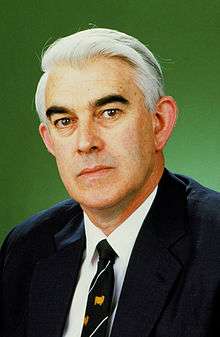 |
John Kerin (1937–) |
Labor | 23 September 1978 – 22 December 1993 |
Previously held the Division of Macarthur. Served as minister under Hawke and Keating. Resigned in order to retire from politics | |
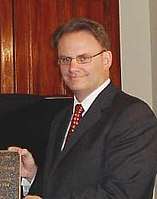 |
Mark Latham (1961–) |
Labor | 28 January 1994 – 18 January 2005 |
Served as Opposition Leader from 2003 to 2005. Resigned in order to retire from politics. Later elected to the New South Wales Legislative Council in 2019 as a member of One Nation | |
 |
Chris Hayes (1955–) |
Labor | 19 March 2005 – 21 August 2010 |
Transferred to the Division of Fowler | |
 |
Laurie Ferguson (1952–) |
Labor | 21 August 2010 – 9 May 2016 |
Previously held the Division of Reid. Retired | |
 |
Anne Stanley (1961–) |
Labor | 2 July 2016 – present |
Incumbent |
Election results
| Party | Candidate | Votes | % | ± | |
|---|---|---|---|---|---|
| Labor | Anne Stanley | 45,002 | 47.76 | −4.38 | |
| Liberal | Shayne Miller | 33,234 | 35.27 | −1.29 | |
| Greens | Signe Westerberg | 5,060 | 5.37 | +0.77 | |
| Christian Democrats | Narelle Storey | 4,841 | 5.14 | −1.56 | |
| United Australia | Ignatios Tsiriplis | 3,957 | 4.20 | +4.20 | |
| Independent | Michael White | 2,135 | 2.27 | +2.27 | |
| Total formal votes | 94,229 | 88.43 | −2.81 | ||
| Informal votes | 12,324 | 11.57 | +2.81 | ||
| Turnout | 106,553 | 90.53 | +0.31 | ||
| Two-party-preferred result | |||||
| Labor | Anne Stanley | 52,270 | 55.47 | −2.73 | |
| Liberal | Shayne Miller | 41,959 | 44.53 | +2.73 | |
| Labor hold | Swing | −2.73 | |||
References
- "Guidelines for naming divisions". Australian Electoral Commission. 20 July 2011. Retrieved 30 March 2013.
- Werriwa, NSW, Tally Room 2019, Australian Electoral Commission.